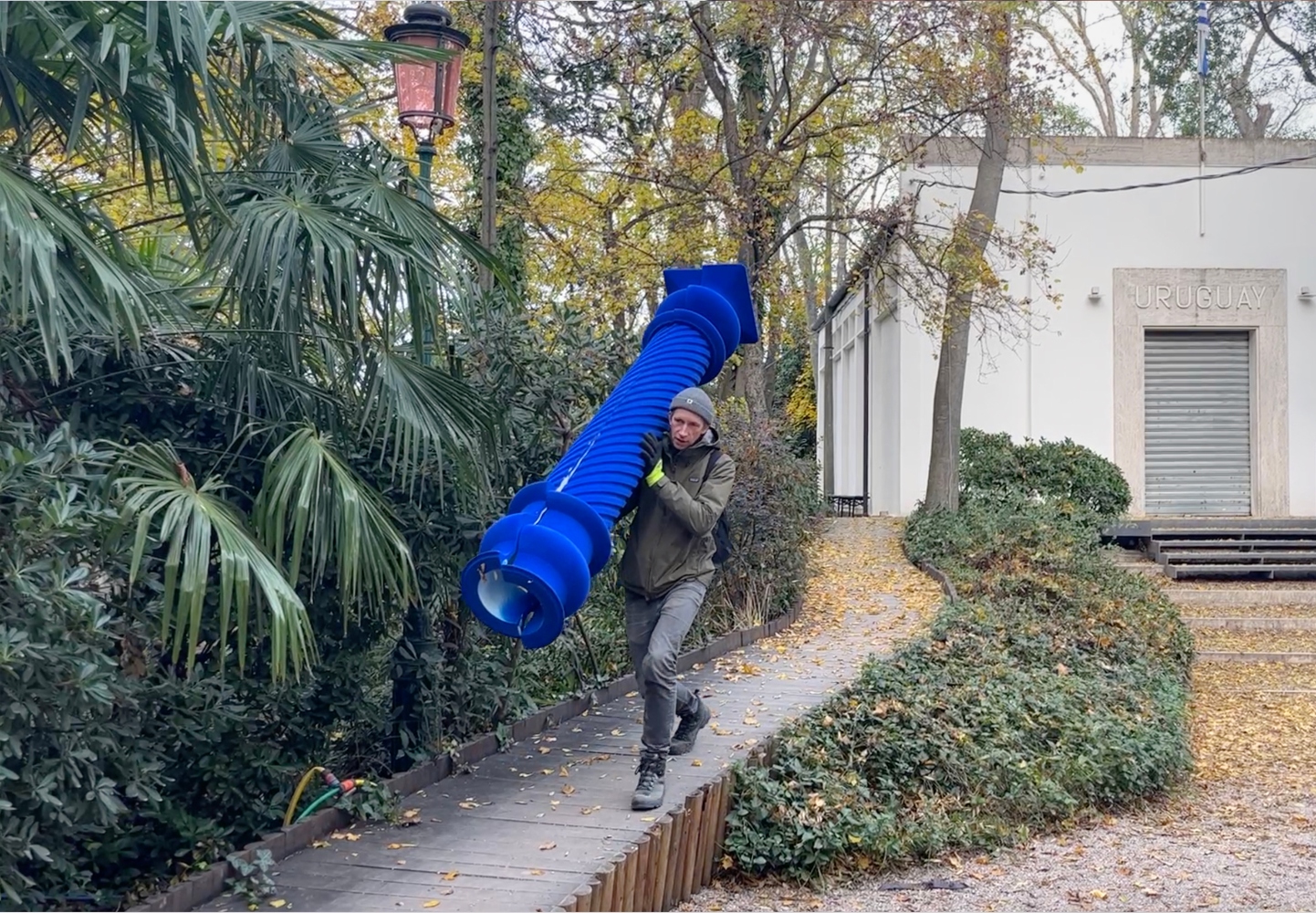
What’s old is new again. Germany’s contribution to the Venice Architecture Biennale is leading the trend for acquiring second-hand goods, by repurposing last year’s pavilion by the artist Maria Eichhorn. To make it their own, the participants are working with materials they salvaged from 40 exhibitions at last year’s art biennale, including many national pavilions.
Reduce, reuse and recycle is the theme of “Open for Maintenance,” which opens to the public on May 20 for the 18th edition of the biennale. It is presented by two sustainability-minded practices: Leipzig-based SUMMACUMFEMMER and Büro Juliane Greb from Cologne and Gent, which are working in collaboration with the quarterly magazine ARCH+.
The meeting space at Open for Maintenance at Venice Architecture Biennale 2023. Photo: © ARCH+, SUMMACUMFEMMER, Büro Juliane Greb.
The idea of “squatting” the Giardini pavilion is inspired by squatters’ movements that have long pushed against relentless urban renewal. Instead, the pavilion’s team hopes to redirect energy away from the notion of rebuilding and towards repair and maintainance what is already within the built environment.
“Every year, the Biennale grounds in Venice host a new exhibition. Hidden from the visitors’ eyes, heaps of materials are transported to the city and then ferried to the various national pavilions by boat and handcart. Six months later, most of them end up being discarded,” write the participants in an accompanying publication. “Now, we are part of the same spectacle. We bear responsibility, but we are also quite free in our design decisions. So, can we find another way?”
The German Pavilion as a repository for salvaged materials at Open for Maintenance at Venice Architecture Biennale 2023. Photo: © ARCH+, SUMMACUMFEMMER, Büro Juliane Greb.
The first step was to treat Eichhorn’s Relocating a Structure exhibition from last year’s art biennale as a “found” object. Luckily, her presentation was minimal to begin with: through delicate interventions, Eichhorn engaged with the German Pavilion’s history of having been rebuilt by Ernst Haiger under the Nazis in 1938 by exposing strips of the original pavilion’s underlying brickwork and foundations.
The insights from her project have been preserved, but additions introduced by the architecture team include accessibility features like a ramp and toilets, as well as a fully-equipped workshop.
To make their adaptations, the team transported leftover materials salvaged from last year’s biennale and national pavilions, including the blue columns from the Israeli pavilion, jute fabric from the Chilean exhibition, and spiral ducts from Austria’s presentation. The central ramp, which has been designed to look like it was integral to the building’s architecture, is made from reused materials from Dana Kosmina’s Ukrainian Pavilion. Gravel, taken from the exhibition “The Concert” by Latifa Echakhch at the Swiss Pavilion was used for the base. The team was also able to salvage PVC banners from the biennale’s entrance tents.
“One challenge we faced was having to adjust constantly,” one of the curators Melissa Makele told Artnet News. “Many decisions could only be made on site. However, designing with unpredictability generates new creative possibilities that offer an optimistic outlook for the discipline.”
Open for Maintenance at Venice Architecture Biennale 2023. Photo: © ARCH+, SUMMACUMFEMMER, Büro Juliane Greb.
It is no secret that biennales have a bad reputation when it comes to waste and carbon emissions, and the impact is felt greatly by an already fragile ecosystem like Venice.
“The biennale cannot be disentangled from its local context and the spatial effects it has on everyday life,” added Makele. “As an exhibition of this size and format, it is structurally involved in the depletion of resources and the economic and touristic exploitation of the city it operates in. You need to take these dynamics into account if you want to participate in such an event.”
“To center architectural practices of care and repair is not so much driven by the motivation to pick up on a trendy topic,” she said. “Rather it is through realizing that we are actively endangering our own existence if we do not work towards a fundamental transformation and restructuring of the industry.”
More Trending Stories: